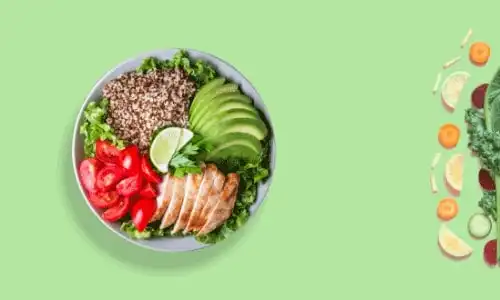
Learn the basics of
Food Science
Good nutrition is a fundamental building block for good health. If it were as easy as just waking up one morning and deciding to ‘just eat healthy’, we wouldn’t be faced with many of the health challenges that many of us deal with daily. Knowledge is truly power when it comes to nutrition and unfortunately there is a vast amount of misinformation available to the public. In our nutrition, food science and menu planning course, I aim going to teach you the basics of nutrition with the end goal of being able to apply nutrition principles to your everyday life and think critically about what you decide to eat. By the end of this course I want you to have the skills to plan your own menu for optimal health, whether it is for yourself or if you are doing this for your family because at the end of the day, everyone can benefit from better nutrition.
35,784
Graduates
All levels
Certified

Course details
MODULE 1
Diploma in Nutrition, Food Science and Menu Planning
MODULE 1
Diploma in Nutrition, Food Science and Menu Planning
1.Body Basics
Do you know how your body works? Before you can learn more about the fundamentals of nutrition and food science, you must understand some basic anatomy and physiology, especially with regards to the GIT (or gastrointestinal tract).
2.Carbohydrates
Carbohydrate rich foods form the basis of many dietary patterns around the world. Not only do they provide energy, but also a variety of nutrients vital for good health. From potatoes in Ireland, to rice in many Asian countries and tubers or grains in Africa. As you will learn throughout this lesson, carbohydrate containing foods don’t only include pizza, pasta and bread and can in fact, be a valuable source of important nutrients as long as you make the right choices.
3.Proteins
Protein has been a hot topic nutrient for several years, from a weight loss diet super star to the nutrient many vegetarians and vegans may be concerned about. This lesson is geared at understanding what protein is, why it is essential for life, how much we actually need to eat on a regular basis to stay healthy and which food sources you should be choosing on the regular to get your daily dose.
4.Fats
Nothing compares to the unique properties that fat imparts to food. As a result, it's difficult to substitute any other ingredient for its functional characteristics. This lesson is geared to help you comprehend fats a little better. Fat is a unique macronutrient as it packs significantly more energy per gram than either carbohydrates or proteins. By understanding their structure, you will see how this is made possible. Interestingly, it is their structure that helps to determine its function and how it is named.
5.Micronutrients
We know that water, food and sleep are essential for life and if we go for certain periods without any of these, deaths is inevitable. But what about micronutrients? How long can we live if deprived of them and how much do you need of each to reach optimal health? We’re still far from complete answers to these questions but we can already identify foods that maximize your odds of reaching your goals. Micronutrients are nutrients needed in micro, or small quantities but don’t let their small quantities fool you, these little guys are incredibly important! Since their discovery, they have been hot topics of study and we are slowly learning more and more about these essential nutrients.
6.Hydration
We are all aware that water is essential for life. But have you ever wondered what water is made up of? How is it digested and absorbed in the human body? What is its function in food and food preparation and do the various types of water influence all of this? In this lesson I will even go as far as to help you understand the science behind the perfect cup of tea and coffee.
7.Salt, Seasoning and Flavouring
‘The most nutritious and beautifully presented meal in the world cannot be enjoyed unless it tastes good.’ Salt is used as a universal flavour improver because at low concentrations it will reduce bitterness, but increase sweet, sour and umami, all of which can produce incredibly tasty results. Salt is the second most frequent food additive by weight, and it is no wonder as we definitely do enjoy delicious food. This lesson delves into the science of salt and expands on a variety of other seasonings and flavourings as well.
8.Sweeteners
Former American president Ronald Reagan reportedly always had a jar of jellybeans on his desk… Talk about having a sweet tooth! Sweeteners are not limited to the sugar you find in confectionary or what you add to your tea or coffee but can be expanded into a variety of sweeteners to suit every culinary and heath need. This lesson dissects the various forms of sweeteners and explains each in detail to help you make the right decision for your needs.
9.Food Selection and Evaluation
Why do you choose to eat specific foods? What influences this decision and drives us to choose certain foods over others. The vast number of foods currently available can easily overwhelm you and make it more difficult to plan a nutritious diet. In this lesson we aim to cut through some of the confusion and give you the facts about food selection and evaluation.
10.Case Study
Wrap up module 1 of this meal planning and food science course with a comprehensive case study using all the recommendations learned over the last 9 lessons. At the end of each module this will be the case as we strive to help you use your knowledge in very practical terms. There will be additional case studies in module 4, because remember that practice certainly makes progress!




















































